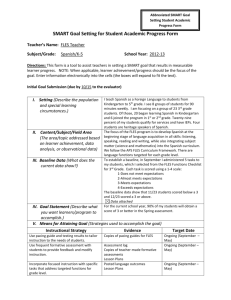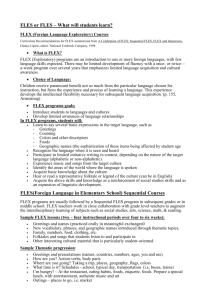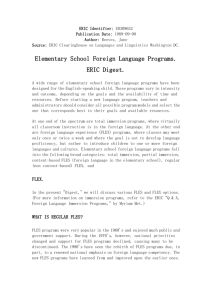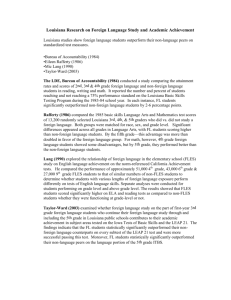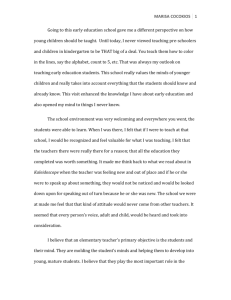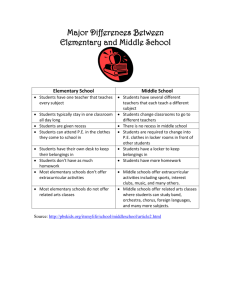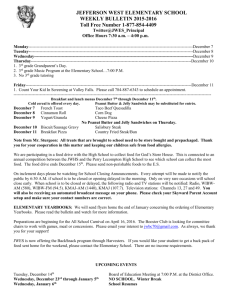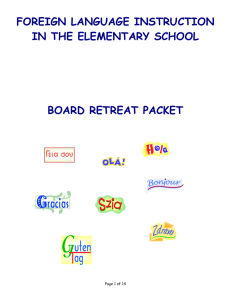SPAN 378 - Chapter 15 - The Final Handout
advertisement
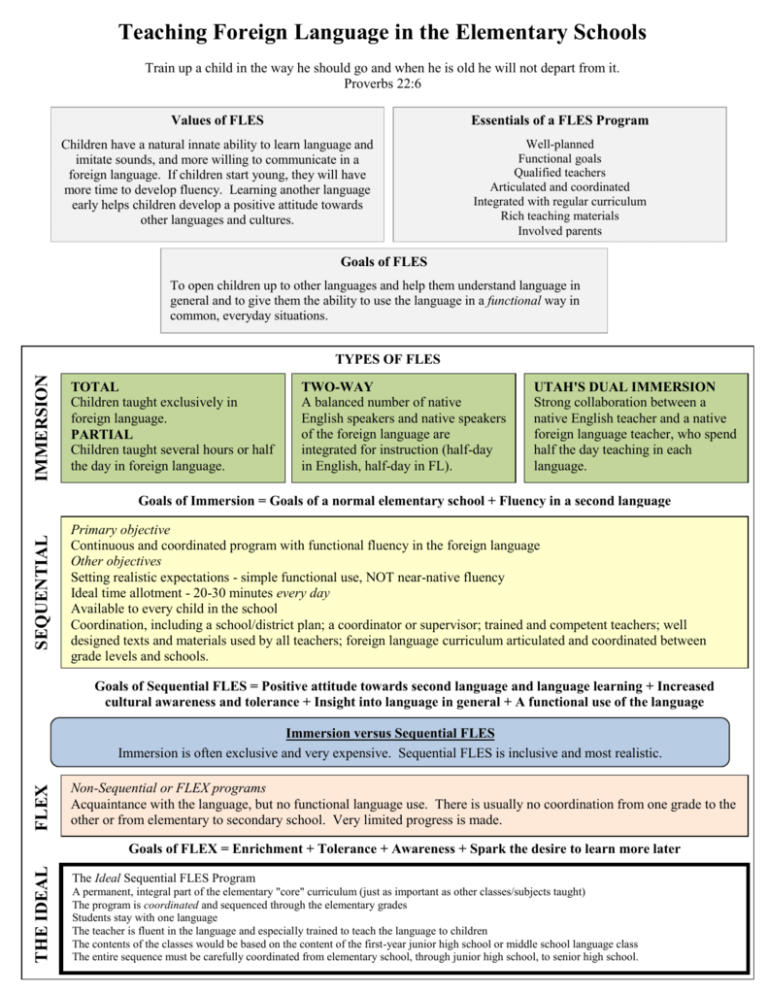
Teaching Foreign Language in the Elementary Schools Train up a child in the way he should go and when he is old he will not depart from it. Proverbs 22:6 Values of FLES Essentials of a FLES Program Children have a natural innate ability to learn language and imitate sounds, and more willing to communicate in a foreign language. If children start young, they will have more time to develop fluency. Learning another language early helps children develop a positive attitude towards other languages and cultures. Well-planned Functional goals Qualified teachers Articulated and coordinated Integrated with regular curriculum Rich teaching materials Involved parents Goals of FLES To open children up to other languages and help them understand language in general and to give them the ability to use the language in a functional way in common, everyday situations. IMMERSION TYPES OF FLES TOTAL Children taught exclusively in foreign language. PARTIAL Children taught several hours or half the day in foreign language. TWO-WAY A balanced number of native English speakers and native speakers of the foreign language are integrated for instruction (half-day in English, half-day in FL). UTAH'S DUAL IMMERSION Strong collaboration between a native English teacher and a native foreign language teacher, who spend half the day teaching in each language. SEQUENTIAL Goals of Immersion = Goals of a normal elementary school + Fluency in a second language Primary objective Continuous and coordinated program with functional fluency in the foreign language Other objectives Setting realistic expectations - simple functional use, NOT near-native fluency Ideal time allotment - 20-30 minutes every day Available to every child in the school Coordination, including a school/district plan; a coordinator or supervisor; trained and competent teachers; well designed texts and materials used by all teachers; foreign language curriculum articulated and coordinated between grade levels and schools. Goals of Sequential FLES = Positive attitude towards second language and language learning + Increased cultural awareness and tolerance + Insight into language in general + A functional use of the language FLEX Immersion versus Sequential FLES Immersion is often exclusive and very expensive. Sequential FLES is inclusive and most realistic. Non-Sequential or FLEX programs Acquaintance with the language, but no functional language use. There is usually no coordination from one grade to the other or from elementary to secondary school. Very limited progress is made. THE IDEAL Goals of FLEX = Enrichment + Tolerance + Awareness + Spark the desire to learn more later The Ideal Sequential FLES Program A permanent, integral part of the elementary "core" curriculum (just as important as other classes/subjects taught) The program is coordinated and sequenced through the elementary grades Students stay with one language The teacher is fluent in the language and especially trained to teach the language to children The contents of the classes would be based on the content of the first-year junior high school or middle school language class The entire sequence must be carefully coordinated from elementary school, through junior high school, to senior high school. SOME FUNDAMENTAL PRINCIPLES OF TEACHING LANGUAGES TO ELEMENTARY SCHOOL CHILDREN - Take a holistic approach - naturally use the language, teach vocabulary in context, etc. - Remember that fluency comes slowly. - Children learn by doing! Center activities on the natural use of simple language. - Emphasize the importance of pronunciation for children who may ignore it. - Teach grammar in an inductive and contextual way. - Make learning a second language FUN - sing songs, play games, act out skits, etc. - Include culture in daily life situations. - Make sure parents are involved in their children's language learning. TEACHING STRATEGIES FOR ELEMENTARY SCHOOLS Formal routines to switch to another language Natural, contextual use of the language (not lectures) Use visual aids Make the language relevant by using language functionally and meaningfully (personal, daily situations) Teach in small chunks and pieces, merging over time Use repetition with variety Have children memorize Inductive and simple grammar presentations Decorate the classroom Share stories and have stories available for children to read Give opportunities to develop listening comprehension Use simple writing activities Use games and fun activities Sing songs to teach expose to vocabulary and culture Provide cultural field trips Have learning stations Take advantage of community and parental help Acquire and use technology. Connect FLES to the regular curriculum. Procure and use texts and materials that have already been created - don't reinvent the wheel! Well-planned, coordinated FLES programs with functional objectives can aid in the development of second language fluency of children in elementary schools across the country!

